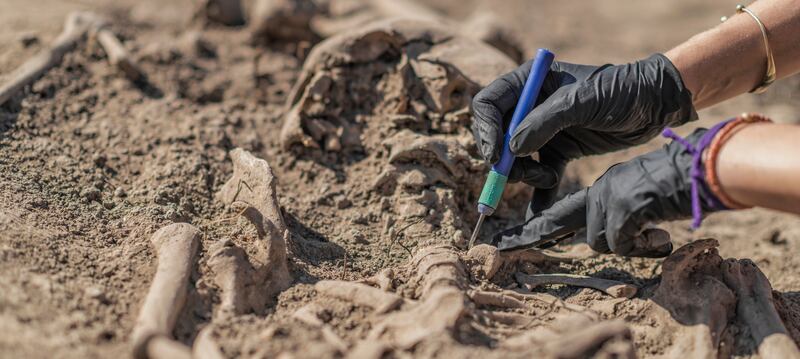A new study published in the journal Nature Communications reveals that scientists have identified ancient skeletal remains with Down syndrome and the even rarer Edwards syndrome.
Researchers even found evidence that individuals with these syndromes were taken care of in ancient times.
What scientists found in the bones
According to Smithsonian Magazine, scientists from around the globe tested the skeletal remains of more than 10,000 people. Specifically, they took DNA samples from the bones and tested them for genetic disorders.
Scientists “screened the DNA extracted from human remains from the Mesolithic, Neolithic, Bronze and Iron Ages all the way up to the mid-1800s,” said Adam Rohrlach, a researcher involved in the study, in a statement from the University of Adelaide.
By testing the DNA for the additional chromosomes that cause genetic disorders, scientists were able to identify six skeletal remains with Down syndrome and one with Edwards syndrome, per the University of Adelaide. Determining if ancient remains have genetic disorders, specifically Down syndrome, is a difficult task for scientists due to the variety of symptoms, per Smithsonian Magazine.
Rohrlach said, “While we expected that people with Down syndrome certainly existed in the past, this is the first time we’ve been able to reliably detect cases in ancient remains, as they can’t be confidently diagnosed by looking at the skeletal remains alone,” per Smithsonian Magazine.
What is Down syndrome and Edwards syndrome?
According to the Mayo Clinic, Down syndrome is a genetic disorder that occurs when the body creates an extra copy of chromosome 21. Symptoms vary from person to person, but some common ones include learning disabilities, heart defects, small heads and shortened height. Down syndrome is often caused by irregular cell division.
Edwards syndrome is a rarer genetic disorder. Caused by an extra copy of chromosome 18, babies diagnosed with Edwards syndrome often don’t survive full term, according to Cleveland Clinic, with most of them dying as stillborns or miscarriages. If a child does survive birth, common symptoms include club feet, low-set ears and abnormal organs. Most do not survive past their first year.
How does this discovery change the way we perceive ancient societies?
The seven babies with genetic disorders that were identified in the new research all came from different time periods and civilizations, according to Smithsonian Magazine:
- Three babies with Down syndrome were dated back to the Iron Age in what is now Spain (and most likely did not survive to birth).
- Three additional children under the age of 1 with Down syndrome were found in three separate locations:
- The Greek Island Aegina, dated to about 3,300 years ago.
- A site in Bulgaria that dates back to the Bronze Age.
- A church graveyard in Finland dating between the 17th and 18th centuries.
- A baby with Edwards syndrome was found in Spain at a Bronze Age site, with researchers believing it most likely did not survive past 40 weeks of gestation.
Across these multiple gravesites, researchers noticed how the children were buried with much care and special gifts. Rohrlach said, “These individuals were buried according to either the standard practices of their time or were in some way treated specially. This indicates that they were acknowledged as members of their community and were not treated differently in death,” per University of Adelaide.

